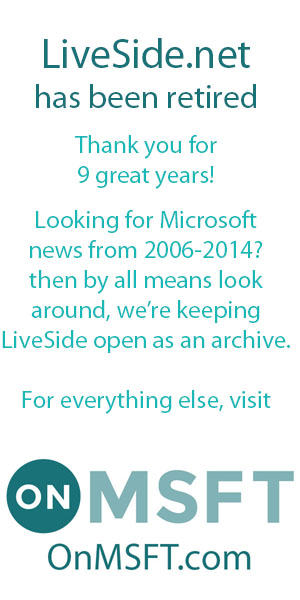When Microsoft introduced Windows Live a little more than a year ago, a couple of questions immediately popped up; what is Windows Live, exactly? and why is it different than MSN? A year later, those questions haven’t been answered. Yes, there has been progress. A steady stream of new services has emerged, the UI has evolved, existing services are connected and complementary, and performance has improved dramatically. Windows Live has a compelling story to tell. Why is no one telling it?
Windows Live isn’t making much of a dent in the marketplace. It’s a non-topic. Market research shows Live Search to be losing share if anything, and certainly not gaining. Oh sure there are marketing gimmicks – Ms. Dewey and her ilk, full page ads, snazzy flash sites. But what Windows Live lacks, specifically, is an identity. No one can describe it, no one from Microsoft has even tried, and repeated pleas from the community to gain an explanation have fallen on deaf ears.
Robert Scoble was for a time the face of Microsoft, and he took quite an interest in Windows Live. The impact he had on the community was impressive, but it was apparently unappreciated within Microsoft. When he left no one bothered to continue the dialogue. At our dinner at Twist last year, Scoble asked Ken Levy “what is the Windows Live story?”. He knew it was all about telling the story. Too bad no one else seems to be getting the message.
Who is Windows Live? Who owns this thing? Who is the voice, the face, of Windows Live? Oh sure we know some names: Ray Ozzie, Chris Jones, Blake Irving, Steve Sinofsky – and now it looks like Joanne Bradford will be running the advertising. OK great. But let’s get serious here. Windows Live has an image problem; that is – it doesn’t have an image. In the history of advertising in the US (and I’m sure there are many examples outside the US, too), companies that needed a big turnaround in perception used their top executives as salesmen, and it worked. Lee Iacocca singlehandedly turned around Chrysler’s image, and then the company. People could relate. People may think Ms. Dewey is kind of a cute diversion, but she’s an actress. Steve Jobs is the face of Apple. You get a sense of Apple from knowing something about Jobs. Right now we have absolutely no idea what Ray Ozzie is thinking, because he’s not telling us what he’s thinking. And what Ray Ozzie should be thinking – every morning – is “How do I define Windows Live?”.
Let’s make no mistake here. This isn’t about marketing. Full page ads aren’t going to do it. Identity is built by communication and by trust. By transparency. By open honesty. We need someone to say “We believe in Windows Live and this is why” and then to make sure everyone is committed to those beliefs. We need someone to say “let me tell you a great story – let me tell you about Windows Live”. We need a mission statement. Is there a mission?
And it’s not all about Ray Ozzie, either. We subscribe to lots of Microsoft blogs, lots of Windows Live blogs. Anymore, most of them only talk about vacation plans or gingerbread recipes. It wasn’t always the case. We learned a lot about Windows Live in the early days of this year by reading passionate bloggers excited about their products. Most of that passionate blogging seems to have dried up and blown away. Windows Live bloggers need to do one thing, to have one mantra: “tell the story”.
It’s so funny in our dealings with Microsoft employees and our research into Windows Live plans. Windows Live has inherited all the arrogance of a monopoly with almost none of the market share. If Windows Live were a start-up with a presence in the community this bad, it probably would have already failed. The message defining Windows Live gets muddier, MSN seems to be competing with, or disconnected from, Windows Live, and it’s becoming clearer that a grand plan simply doesn’t exist. No one knows what’s going to happen next, and absolutely no one comes out of the ivory tower to grab a hold of this thing and run.
Microsoft was late to the show in search. Late to the show in mapping. Late to the show in making improvements in Hotmail, in IE. But they’ve made great strides. Virtual Earth 3d rocks. Live Search has made search relevance nearly a commodity. Hotmail, or Live Mail, now offers 1gb of storage for 200 million users, an awesome feat. But hey, look, Microsoft is late to the show in telling the story about what they’re doing. Until someone takes some initiative within the company to define Windows Live – to tell the story – Windows Live is condemned to being an also-ran.

